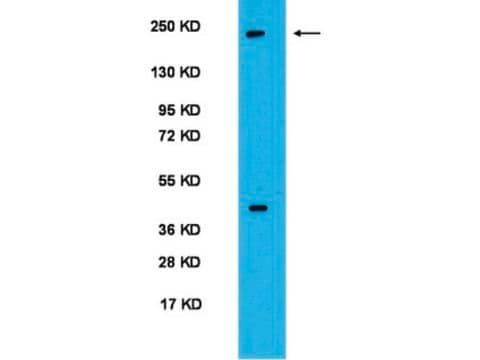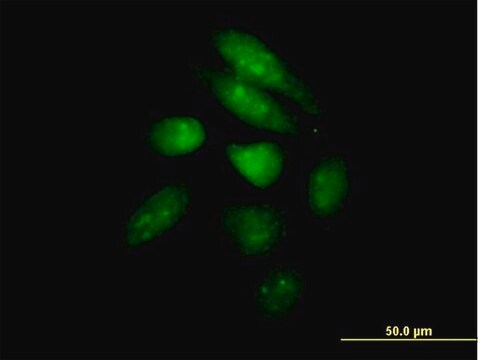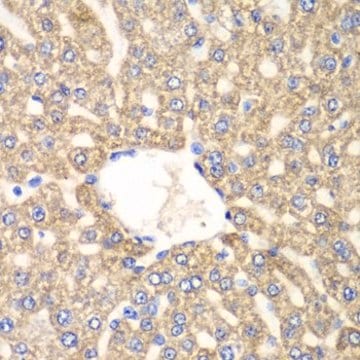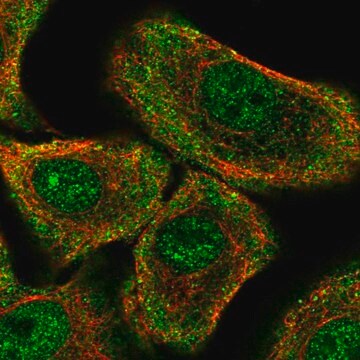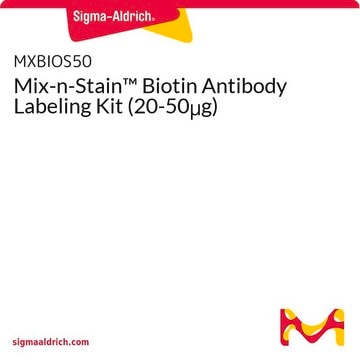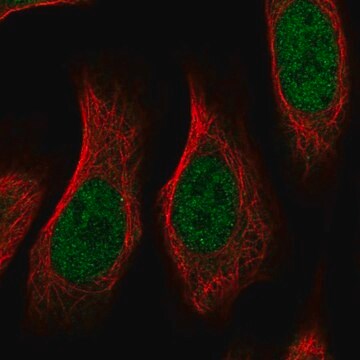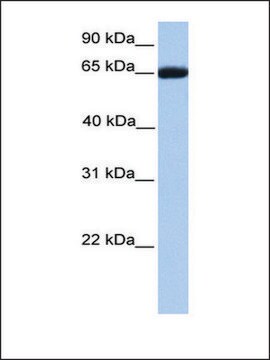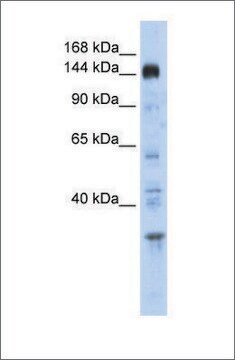AB2201
Anti-mPER1 (residues 6-21) Antibody
serum, from rabbit
Sinonimo/i:
Circadian clock protein PERIOD 1, Circadian pacemaker protein Rigui, Period, drosophila, homolog of period 1, period (Drosophila) homolog 1, period homolog 1 (Drosophila)
About This Item
Prodotti consigliati
Origine biologica
rabbit
Livello qualitativo
Forma dell’anticorpo
serum
Tipo di anticorpo
primary antibodies
Clone
polyclonal
Reattività contro le specie
human, mouse, rat
tecniche
western blot: suitable
N° accesso Genebanck
N° accesso UniProt
Condizioni di spedizione
wet ice
modifica post-traduzionali bersaglio
unmodified
Informazioni sul gene
mouse ... Per1(18626)
Descrizione generale
Specificità
Applicazioni
Tested on whole brain (SCN; peak staining at CT/ZT12). Optimium working dilutions need to be determined by end used.
Qualità
Descrizione del bersaglio
Note legali
Non trovi il prodotto giusto?
Prova il nostro Motore di ricerca dei prodotti.
Codice della classe di stoccaggio
10 - Combustible liquids
Classe di pericolosità dell'acqua (WGK)
WGK 1
Certificati d'analisi (COA)
Cerca il Certificati d'analisi (COA) digitando il numero di lotto/batch corrispondente. I numeri di lotto o di batch sono stampati sull'etichetta dei prodotti dopo la parola ‘Lotto’ o ‘Batch’.
Possiedi già questo prodotto?
I documenti relativi ai prodotti acquistati recentemente sono disponibili nell’Archivio dei documenti.
Il team dei nostri ricercatori vanta grande esperienza in tutte le aree della ricerca quali Life Science, scienza dei materiali, sintesi chimica, cromatografia, discipline analitiche, ecc..
Contatta l'Assistenza Tecnica.